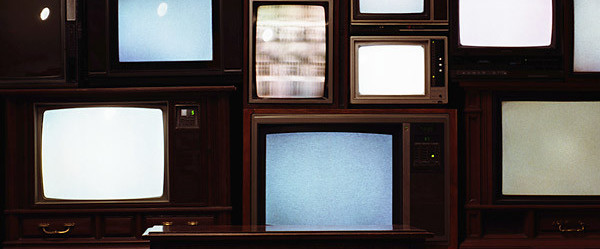M+E Connections

NAB 2017: CTA, TV Makers Optimistic About 4K TVs, ATSC 3.0
Story Highlights
LAS VEGAS — The Consumer Technology Association (CTA) and TV makers are upbeat about the sale of 4K TVs and arrival of ATSC 3.0, according to CTA and CE company executives attending the NAB Show this week.
“I feel like we’re in a great position now and consumers are, too, when you look at the value proposition they have for TV,” Brian Markwalter, SVP of research and standards at CTA, told reporters during an April 24 meeting at NAB. This is the fourth year in which 4K TVs have been on sale and they have been adopted by consumers even more rapidly than HD TVs were, he pointed out.
There was 40% sales growth for 4K TVs in the U.S. last year, with 10 million units sold, he said, predicting “even higher growth” this year of about 50% for a total of about 15.6 million units sold.
Meanwhile, High Dynamic Range (HDR) and wide color gamut are “becoming a mainstream offering” that consumers are responding to, he said.
Jeff Joseph, CTA SVP of Communications and Strategic Relations, said he was attending NAB to “see the broadcast response to ATSC 3.0.”
The next-generation broadcast transmission standard is, in fact, one of the big topics at NAB this week, among members of the Media & Entertainment Services Alliance (MESA) and other companies also, as expected. After all, ATSC 3.0 provides a wide range of benefits and opportunities for broadcasters, as well as many of the companies that provide content and services to them, enabling over-the-air delivery of everything from immersive audio to 4K video to targeted advertising.
Markwalter made note of the ATSC 3.0 demonstrations being provided at NAB throughout the week. He also pointed out that South Korea has committed to introducing UHD broadcasts using ATSC 3.0. “So, they will be on a fast track” in that country, he said, adding: “We’re tracking kind of right there with them” in the U.S. “So, basically as quick as the standard gets finished, it is going right into testing and then into production” in South Korea, he said.
Of the U.S., CTA is cooperating with NAB to conduct ATSC 3.0 field testing in Cleveland, Markwalter went on to say, predicting “we’ll see kind of a richer variety of supported services” in this country. The FCC recently approved voluntary adoption of ATSC 3.0 in the U.S.
“We at CTA and our member companies are bullish about next-gen TV,” including ATSC and 4K Ultra High-Def (UHD), Joseph told reporters, noting that, at the Consumer Electronics Show in January, when walking across the show floor, “you couldn’t help but see all” the many 4K TVs from several manufacturers, at various price points.
Further underscoring the significance of 4K, TV manufacturers are now pretty much focusing their TV lines strictly on UHD models once you get past 40 inches, Peter Fannon, VP of corporate and government affairs at Panasonic Corp. of North America, pointed out during the same meeting. “It’s basically a 4K world,” he said.
The ability of 4K TVs to so effectively upconvert HD content is significant, Fannon also said, but conceded that “the bigger the screen, the more you really want the native” 4K content. What is helping to drive sales of 4K TVs is that retailers are doing a “very good job” of displaying the sets, he said, noting consumers can “see the difference” when they walk inside stores. “That’s why the sales have taken off” and why 4K TV sales have been “dramatically better” than those of HD TVs in the first three years, “even though it was kind of a forced march” to transition from standard-definition to HD TVs, he said.
The 4K “ecosystem has really come together,” including TVs and Ultra HD Blu-ray players, Dan Schinasi, director of product planning at Samsung Electronics America, told reporters. He added: “We’re in pretty good shape.”
The presence of ATSC 3.0 at NAB this week is only underscored by the “NextGen TV Hub” at the show that the Advanced Television Systems Committee said in March was designed to allow broadcasters and equipment suppliers to highlight the standard’s capabilities now that completion of the next-generation broadcast TV standard was “in sight.”
“I think the goal of the Hub is to really drive the message home for broadcasters that not only is ATSC 3.0 real and wonderful and all of this, but hey, there is a business model that’s involved and there is ROI” (return on investment), Madeleine Noland, consultant on the Standard Technology and Development Team for the Convergence R&D Lab at LG Electronics, told reporters.
Screen time among TV viewers, meanwhile, “stunningly” continues to increase, Markwalter also said, although he noted that the types of devices being used by consumers is increasingly a mix between TVs and smaller devices. Consumers, however, still tend to view TVs as providers of a “premium” experience, he said.











